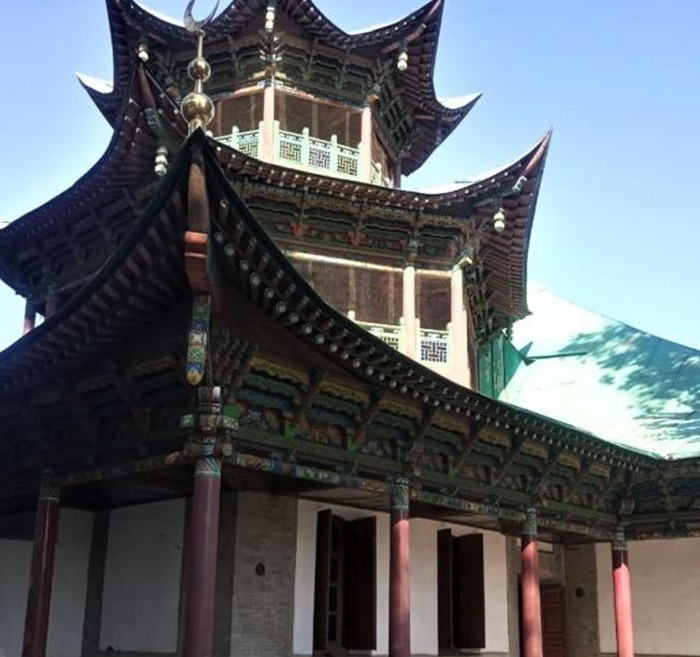Žarkent: Electric cars and Chinese tourists at the crossroads of the ancient Silk Road
On the border between Kazakhstan and Beijing, instead of camels and flocks, there are rows of increasingly imposing trucks loaded with new vehicles for the Asian and Russian markets. Among the Kazakhs there is mistrust of the symbols of Beijing's 'invasion', but the large trade centre of the free trade zone is now a destination for 'pilgrimages' like the historic wooden mosque.
Almaty (AsiaNews) - Radio Azattyk's correspondent from Almaty, the journalist and philologist Petr Trotsenko, has created a very particular project on Kazakhs who live near the borders with China, publishing it as a series of reports with the title "The border condition."
In one of these he focused on the city of Žarkent, the administrative center of the province of Panfilovo in the Žetisu region, 29 kilometers from the border, where the inhabitants live according to the "principle of the three Ps" from the Russian words Prodaži, Perevozki, Posredničestvo, " sales, transport and brokerage” and today find themselves at the center of a redefinition of relations between East and West on the Central Asian routes.
The route from Almaty to Žarkent runs for over 200 kilometres, crossing the mountains to end up in the steppe and finally in the desert areas of the Barchane, the horseshoe dunes. It is a section of the ancient Silk Road, as the drivers of the area proudly boast, on which caravans passed and trade flourished.
Today, instead of camels and herds on the passes, lines of increasingly imposing trucks follow one another along the highways, many of which carry Chinese-made cars. For the inhabitants of Žarkent, Chinese cars are a thorny issue, because they are considered the symbol of the invasion, the expansion of China into Kazakhstan.
As Trotsenko says, "the Sinophobia of the Kazakhs is an ancient theme", and in these border areas it expresses itself in more acute forms. The border remained closed during the years of the pandemic, but in recent times the transport of cars from China has become one of the fastest growing activities, destined for the Asian and Russian markets.
Brand new models of electric cars and large means of transport are also arriving, which are difficult to manage due to a lack of spare parts, and (Chinese) shops are also starting to open for these needs, mechanical workshops and car showrooms in all Kazakh cities.
The expansion also affects other productive and industrial sectors: the Chinese build factories and install their own machinery, which is not accessible to Kazakhs. Along with the technology, engineers and specialists arrive from China, and the local inhabitants at most are hired as drivers, simple workers or service personnel.
Over 40 thousand people live in Žarkent, but it doesn't really look like a city, with one-story huts and very defective roads, small hotels and administrative offices; Cows and horses graze on the outskirts, feeding on the withered grass of the previous year.
The majority of the inhabitants are Kazakhs and Uyghurs of Islamic faith, who try to avoid talking about the "re-education camps" of neighboring Xinjiang, especially with outsiders. In the surroundings of the town there is still a lot of agricultural land where corn is grown, and there is also a factory for the production of corn starch, fruit syrups and animal feed.
A monument to the closeness of peoples that attracts the attention of tourists is the wooden mosque in the center of the city, built at the end of the 19th century by the Chinese architect Hon Pike, commissioned by the local merchant Vali Akhun Juldašev. Next to the mosque there is a museum with objects of daily life from the 19th century, bladed weapons, ancient jugs, coins, ornaments and jewels, horse harnesses.
Many groups of Chinese tourists pass through Zarkent, on their way to tours throughout Central Asia, who then stop in Almaty and Turkestan, or continue towards Kyrgyzstan and Uzbekistan.
The Kazakhs who come here visit the mosque, and then flock to the large Khorgos international shopping center on the border, a free trade zone created in 2005 under an agreement between Astana and Beijing. China's “great invasion” of Kazakhstan is peaceful and beneficial to both sides, waiting to see what the future holds.
02/01/2021 10:32
30/03/2021 11:33
31/01/2020 12:50
09/04/2024 09:56







.png)










